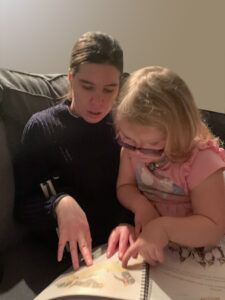
Editor’s Note: Today is World Braille Day, celebrated on January 4, Louis Braille’s birthday, each year. This piece is the first in a four part series on Braille. Tune in next week for part 2 in this series, which will appear in our World Braille Day corner.
The Importance of Literacy
The ability to read and write is commonly known as literacy (Collins Dictionary, n.d.). Literacy skills are typically learned within the primary grades of a child’s formal education (Ramey, 2015). According to Project Literacy Canada (n.d.), literacy is vital for individual and community well-being as well as economic development. At the individual and community level: “…one needs adequate literacy skills to participate and function happily within - and contribute to - one’s [community]” (The Importance of Literacy to Individual and Community Well-Being, para.1). It is essential for everyone to acquire literacy skills to fully participate and be a part of society.
Braille Defined…
Created in France in 1824, by Louis Braille, braille is a tactile system comprised of a set of six small raised dots (Belusic, n.d.).The six dots are arranged to form what is called a “cell”. Braille Authority of North America (n.d.). describes a braille cell: “A cell is made up of six dots that fit under the fingertips, arranged in two columns of three dots each. Each cell represents a letter, a word, a combination of letters, a numeral or a punctuation mark” (Learn the Basics of Braille, para.1). For people who are blind, braille is their path to literacy and independence (Braille Literacy Canada, n.d.).
References
- American Foundation for the Blind (2016). Making the Transition from English Braille to UEB, Retrieved April 24, 2021
- Belusic, D. (n.d.). The Life of Louis Braille, Retrieved April 23, 2021
- Braille Authority of North America (n.d.). About Braille, Retrieved April 23, 2021
- Braille Literacy Canada (n.d.). Welcome to Braille Literacy Canada, Retrieved April 23, 2021
- Collins Dictionary (n.d.). Retrieved April 18, 2021
- Project Literacy Canada (n.d.). The Importance of Literacy, Retrieved April 18, 2021
- Ramey, D.M. (2015). It’s Elementary! Supporting Literacy in the Primary Grades, Young Children, Retrieved April 18, 2021
- SNOW Inclusive Learning and Education (n.d.). Braille, Retrieved April 22, 2021
Read more about Braille in our World Braille Day corner.